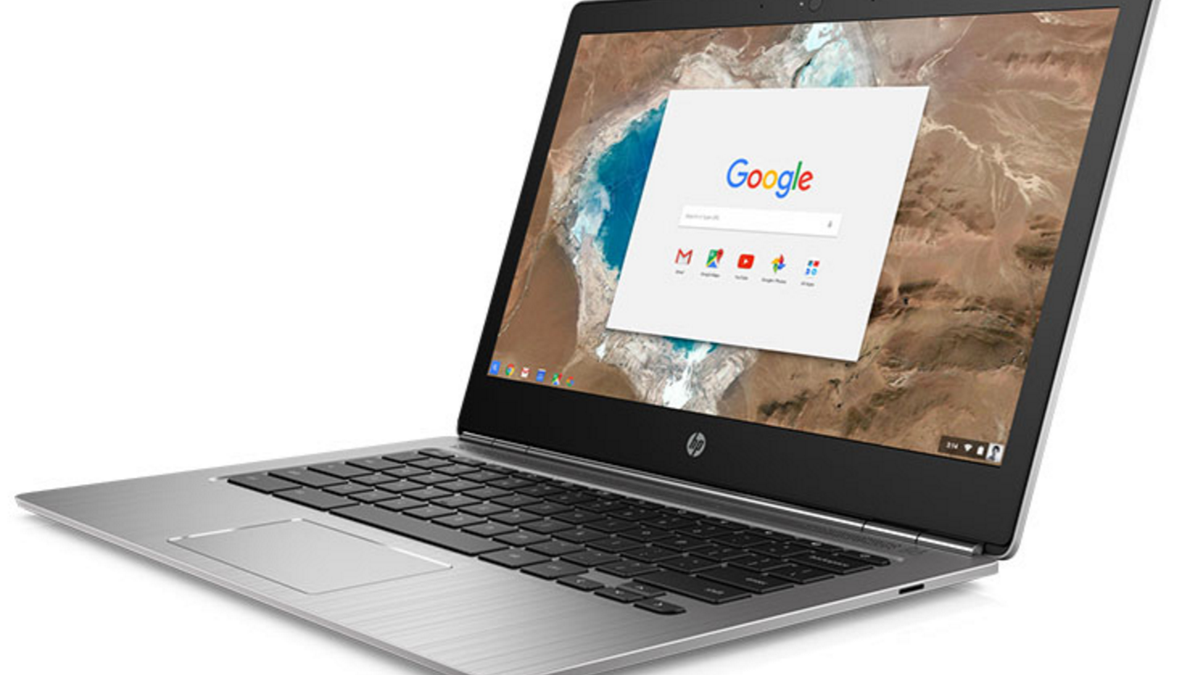
HP Chromebook 13 G1 (Hewlett-Packard)
Hewlett-Packard’s Chromebook 13 is the best evidence yet that the Chromebook is here to stay.
Built around Google’s Chrome operating system (OS), Chromebooks are inexpensive laptops that are beginning to challenge the hegemony of Windows and the Mac.
In brief: the Chromebook, for many, can be your only laptop. I can say that with authority because I’m very attached to Windows and Mac machines. Despite that, I have been happily using HP’s Chromebook 13 exclusively for a couple of weeks.
Chromebooks are powerful if you give them time
Jumping to another operating environment is always jarring. There’s no way to avoid the initial gotchas, pitfalls, and frustration. Chrome OS is no different. The flip side is, it can also open your eyes to a better way of doing things.
And Chrome OS could be a better way for lots of consumers looking for an inexpensive platform that is essentially self-repairing, secure, extremely fast, and where all future operating systems are ultimately headed.
Chrome OS is based on Google’s popular Chrome browser. So, if you’ve spent time in the Chrome browser, you’ll have a pretty good idea of what to expect. Chrome OS is presented as a “desktop” -- just like Windows or Mac -- with icons and a settings bar (the latter analogous to the Control Panel in Windows or System Preferences in OS X). But everything takes place in the browser. That gives you access to Google’s excellent office suite, its Pixlr image editor, Google Photos, the Chrome Web Store, Play Music, Play Movies, Google Hangouts, and lots more.
The HP Chromebook 13 G1
The Chromebook 13 G1 is HP’s 2016 high-end Chromebook, starting at $499. Believe or not, that’s pricey for a Chromebook, which often sell in the $199 to $399 range. For $499 you get a lot, though.
For starters, HP includes a 13.3-inch 3,200-by-1800 “QHD+” display. When HP announced the Chromebook 13 G1, I had to do a double-take on the display specs. In short, you won't find a 2016 Windows PC or Mac with that kind of display for anything close to $499. Other specs for the $499 model include an Intel Pentium 4405Y (1.5GHz) processor, 4GB RAM, and 32GB of storage.
While the processor, RAM, and storage specs may seem meager, they’re not. That’s the beauty of a Chromebook— you don’t need a fast processor or a large hard drive. The new 2016 Chromebooks with Intel’s lower-end 6th Generation Pentium or Core M processors are fast. And because the storage takes place in the cloud, 32GB is adequate.
Other notable HP Chromebook 13 specs include a 2.84 pound weight (but it feels lighter because of the good weight distribution), a 0.5-inch thickness (laptops don’t get much thinner than that), and a sturdy aluminum chassis.
Related:
The HP Chromebook 13 I’m using goes for just over $800. That extra cost is mostly pegged to the faster Intel 6th Generation M5 processor and 8GB of RAM in my model (instead of 4GB).
Battery life is good. I found the 3-cell, 45Wh battery delivered a long time between charges. What most reviews (which found battery life lacking) miss is that a laptop with a very-high-resolution display, like HP’s Chromebook 13, is never going to last long between charges without a really big battery. But I got more than seven hours doing lots of productivity work, watching a short movie, and the usual social media and Web browsing.
All in all, the HP Chromebook 13 is a high-quality laptop that delivers a lot of bang for the buck and presages a bright future the Chrome OS.
Caveats
The following caveats don’t apply to HP’s Chromebook specifically, but to any Chromebook.
If you’re wedded to Windows and Microsoft Office, the Chromebook probably won’t be a satisfying experience. I’m a heavy Office 365 and OneDrive (Microsoft’s online file hosting service) user. While the Chrome OS gives you access to the online version of Microsoft Office, many of the full Office features are missing. That said, I found that the Google office suite is a powerful replacement and I would be perfectly happy using it full time (as I’ve been doing).
Another thing to keep in mind is, you don’t have access to the range of apps available to Windows and Mac users. In my experience with the Chromebook, however, I always found ways to get things done and almost always found a comparable app online.
Chrome OS Offline: Whether I’m using Windows, Mac, or Chrome OS, I’m always online (as are most people these days). That said, Chromebooks are designed as cloud devices that rely on being connected to the Web. But Chromebooks are much better at working offline now. For example, when I was writing this review in Google Docs, I turned off the Wi-Fi, and Chrome immediately notified me that all changes were being saved offline.
Finally, the question that always gets asked is, why do I need a Chromebook if I can just run the Chrome browser on my Windows PC or Mac? My response: true, but why not consider a cheap Chromebook that’s fast, secure, manages and updates itself automatically, and has almost none of the clutter and overhead that Windows and macOS have. Besides, the kind of OS that Google is offering is the future of the PC and Mac. Look no further than Apple’s iOS.




















